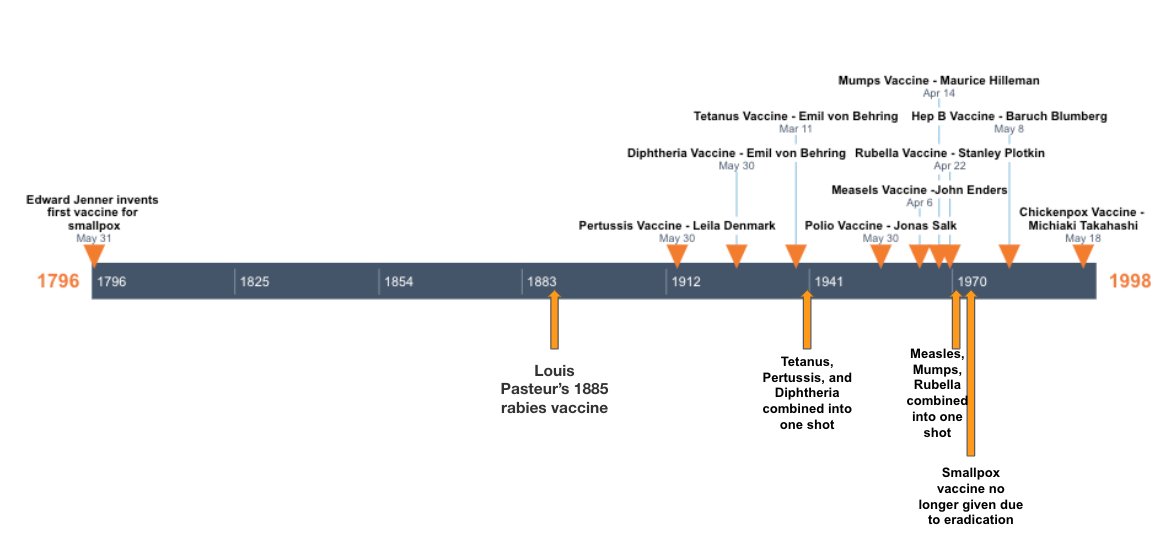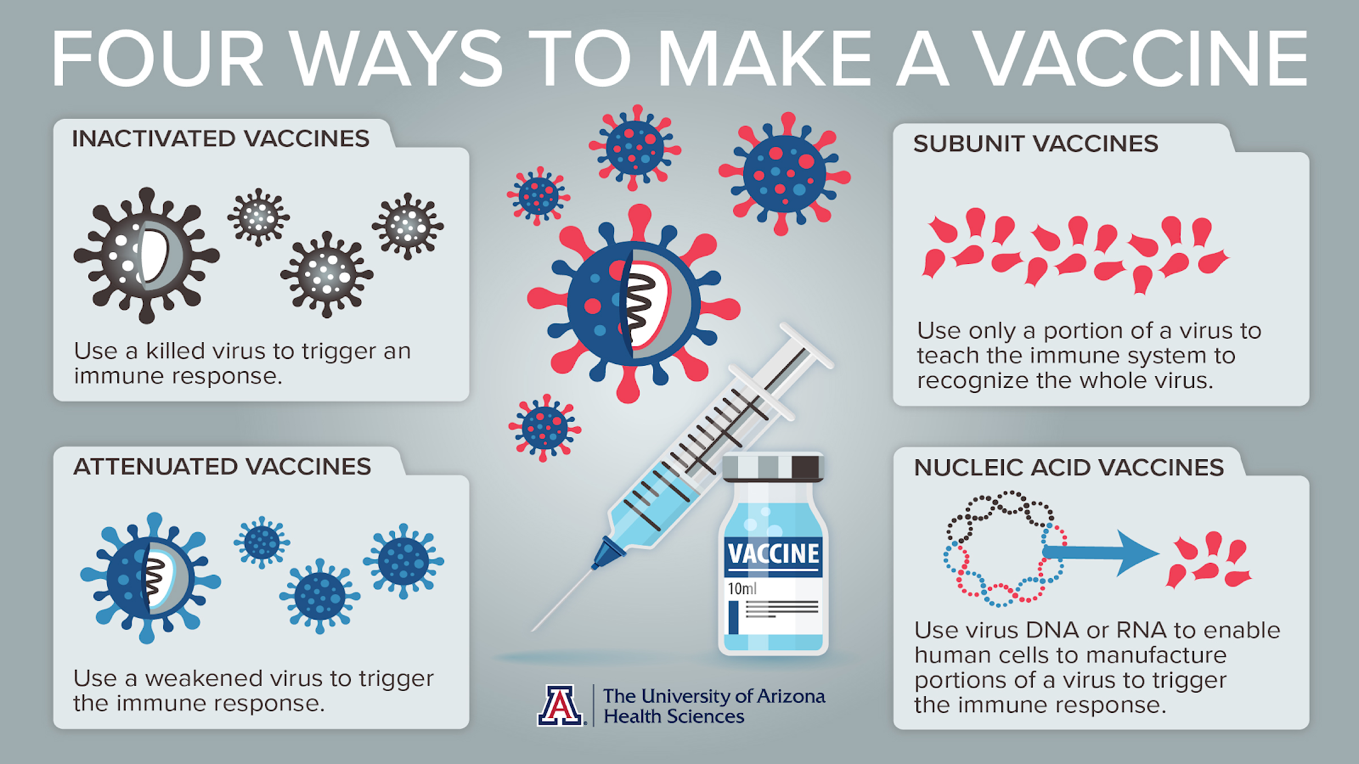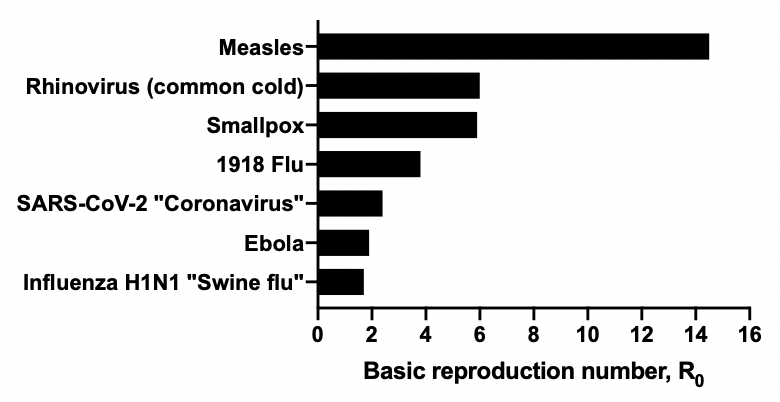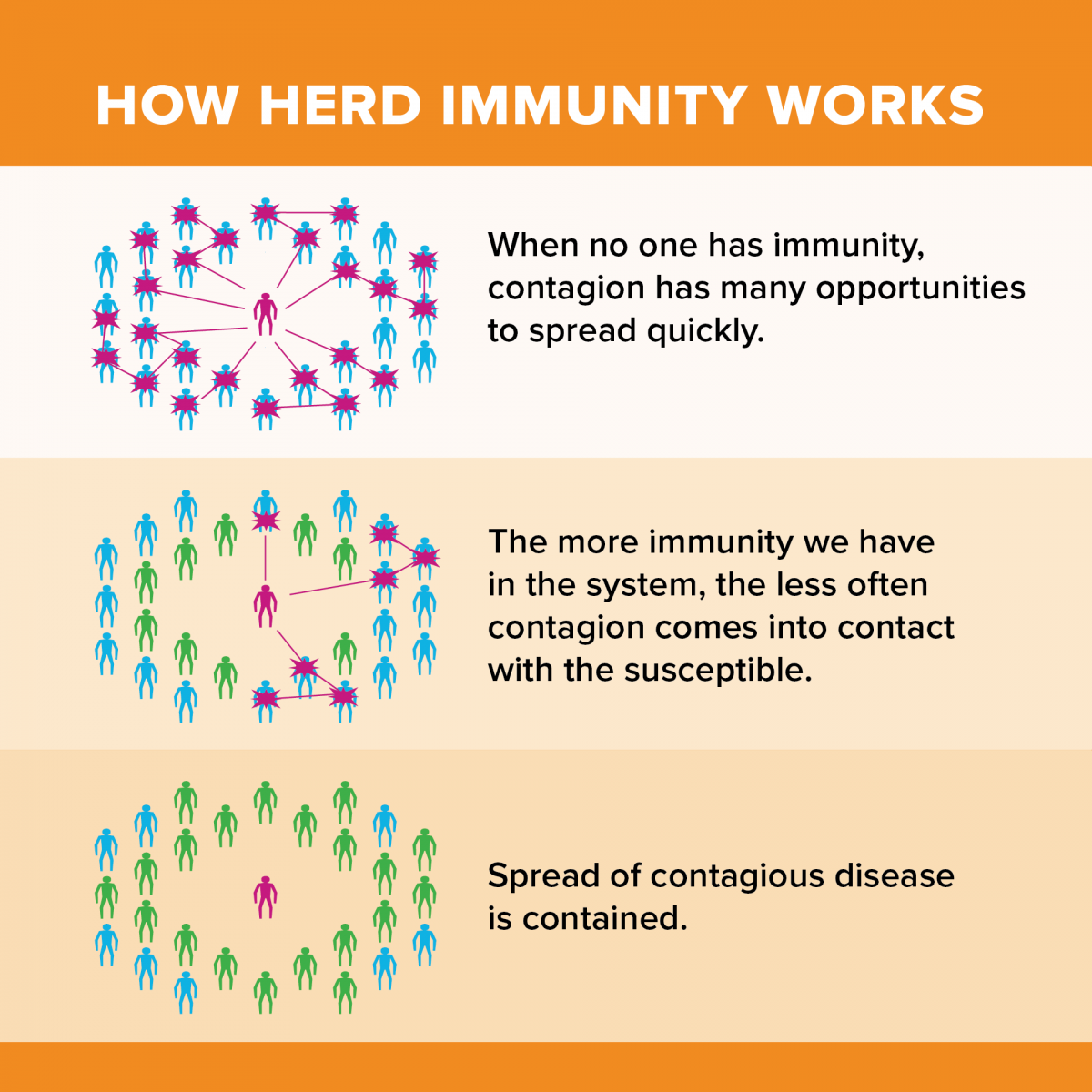by Buck Institute
March 16, 2021 . BLOG
The 8th Wonder of the World: the Invention of Vaccines
This is the first in a series of blogs by Dominican University Masters students all about the COVID-19 pandemic. In this post, students Melia Granath-Panelo, Natalie Hill, Cavan Patterson, and Anne Marker describe important background on vaccines and their vital role in a healthy society.
Edited by Dr. Pankaj Kapahi, Buck Professor

History of Vaccines
The CDC states that vaccines are among the most important public health interventions in history. The story of vaccines is a long book with many chapters; let's look at some of the highlights. The concepts of vaccines was discovered by Edward Jenner during the outbreak of smallpox in the late 1700s. He noticed that milkmaids who had contracted cowpox (the bovine form of the smallpox virus) were immune to smallpox infection. He took this one step further by placing a sample of the pustule from the cowpox-infected milkmaid’s hand under the skin of a young boy in a procedure called inoculation. The boy was inoculated once in May and again in July, and then became immune to smallpox.
The word vaccine is something that is used so commonly, but its origin is actually based on the Latin word for cow, which is vacca, and for cowpox which is vaccinia; therefore, Jenner decided to call this new ‘inoculation’ procedure vaccination.
Though this discovery was essential in the eradication of smallpox, not everyone saw this method as such a revolutionary success. In fact, his findings were rejected continuously throughout his lifetime. One notable doctor on the opposing side was Dr. P. Chappon. In his 1803 publication, he warned against the dangers of the smallpox vaccine. Though he was arguing against a method that would eventually save millions of lives, Dr. Chappon does bring up an interesting point. The bottom section of this publication translates to,
“All consideration, all enthusiasm for a system, can vanish if by its adoption the life of a single individual is threatened.”
This mindset is important to remember, and in fact is why we have so many stages in place for our clinical trials that produce new drugs and vaccines.

Additionally, an interesting socio-cultural boundary arose surrounding the use of bovine material as means of vaccination. Throughout the 19th century, British colonial administration went to great lengths to develop the vaccine, but had to contend with the reluctance of Hindus, who consider cows to be sacred. Even though India was one of the most heavily ravaged places on the globe by smallpox, Indians found the use of sacred animals for this purpose abhorrent given their religious beliefs. Through persistent outreach by public health officials and further development of the vaccine, eventually the vast majority of the Indian population was vaccinated and smallpox is now eradicated globally.
However, we must remember that science is not a linear process. Many, many failures eventually lead to miraculous success. Each discovery adds a new dimension to the endless web that the field is composed of. The vaccine against smallpox, despite its many challenges and backlash, served as an inspiration for a new era in medicine: the Pasteurian program summed up as ‘une maladie, un vaccin’ (‘for each disease, a vaccine’).
As seen in the timeline above, there is a huge gap in the creation of the first vaccine to the next, then there is a sudden boom in the discovery of many new vaccines. This type of lag time is a phenomenon we can see modeled in the development of new technologies. Innovation and invention are not linear progressions, but rather exponential booms, with each discovery allowing for new ones to occur. Vaccines are now given in a well-regimented system starting at birth. Now, many of these diseases, such as type 2 &3 polio virus,are considered to be eradicated, though vaccination rates are falling in some areas which allows these diseases to resurface in the population.
Types of vaccines
In an effort to make the immune response more understandable, let's break down what happens inside the body when you get a vaccine. It can help if we think of the vaccination process like a fire drill. Fire drills are a practice round for when a real emergency arises. You learn exit routes and how to get to safety so that you may execute these procedures quickly and without thinking. A vaccine gives our immune system a chance to rehearse for an emergency just like this.
Vaccines can protect us from both viral and bacterial infections, but there are some key differences between these infectious agents. Firstly, a virus is a non-living agent that can only replicate when it is in our cells. Bacteria on the other hand can live outside of our bodies and replicate freely and are often treated with antibiotics.
Each type of vaccine listed below works in a slightly different way, yet all contain some portion of the virus or bacteria so that our immune systems may build up a defense against them in case you ever come into contact with the real thing. Let's take a specific example of a type of vaccine: the attenuated virus.  An attenuated virus vaccine contains the weakened viral particle, making it non-infectious when administered. Since the infectious agents have been ‘turned off’ in the lab, our immune system can recognize, rehearse, and remember this type of pathogen, create antibodies against it, and use those antibodies to guide our immune cells to fight off the real thing.
An attenuated virus vaccine contains the weakened viral particle, making it non-infectious when administered. Since the infectious agents have been ‘turned off’ in the lab, our immune system can recognize, rehearse, and remember this type of pathogen, create antibodies against it, and use those antibodies to guide our immune cells to fight off the real thing.
- Attenuated virus vaccines are used in chickenpox, smallpox, measles, mumps, rubella.
- Inactivated vaccines are used for poliovirus (IPV) vaccine, the whooping cough vaccine, the rabies vaccine and the hepatitis A virus vaccine.
- Subunit vaccines are HPV, Hepatitis B, and Meningitis.
- Nucleic acid vaccine is the SARS-Cov 2 vaccine; specifically, it uses mRNA from a certain portion of the virus to help our body recognize and kill the virus if it enters our system.
To learn more about this process, read “A Shot at Ending the Pandemic: Vaccines Explained”, coming soon in a blog in our series.
Have You Heard of Herd Immunity?

Figure 2: Basic reproduction numbers (R0) of various diseases. R0 indicates transmissibility of a disease by averaging how many people would be infected by one contagious person. Of these diseases, measles and smallpox have been declared eliminated by the WHO.
You might be thinking, “Nobody that I know has ever had the measles, but I have read that the additives in vaccines are dangerous! So why would I want to put that in my body, or worse, my child’s body for a disease that hasn’t infected anyone in 50 years?” The answer is this: the reason you haven’t heard of many, if any, cases of the diseases that are routinely vaccinated for is because they have been virtually eradicated by the majority of our population having been vaccinated.
Each virus has a number that is assigned based on how infectious it is, as shown in Figure 2. That number is called R0 (pronounced “R naught”). R0 helps scientists figure out what percentage of our population needs to be immune to the virus – either by having survived infection or by having been vaccinated – in order to prevent other, more vulnerable people in our population from becoming infected with the virus and experiencing a much more severe case of the disease.
For example, measles’ R0 was determined by scientists to be between 12 and 18, which meant that in order for the population to be, as a whole, virtually immune to the virus, 83-94% of the population must become immune by surviving a case of the measles or receiving the measles’ vaccine. This percentage is called the “herd immunity threshold” and uses the R0 of a disease in a calculation that reflects that the higher a disease’s basic reproduction number is, the larger proportion of a population will need to be immune to the disease to reach herd immunity.

Figure 3: Schematic of Herd Immunity. The person in purple is an infectious patient, people in blue are people who are not immune to the disease, and people who are in green are immune. As more people become immune there are less people becoming infected by the initial purple patient. This is how herd immunity works.
Thankfully, in the case of measles that has happened! By 2000, enough of the population had become immune to measles by receiving the vaccine – not by having contracted measles – that it was classified as an eliminated virus by the World Health Organization. This ability for a population to be collectively safe from a virus by the majority of its constituents being vaccinated is called herd immunity. Despite having achieved elimination status, there have been cases of measles resurgence due to individual choices not to vaccinate.
Though a small fraction of herd immunity comes from those individuals who contracted the disease and survived, it is essential to point out that no disease has ever been eradicated by allowing every person to contract it. You may have heard the term “herd immunity” thrown out by the media, public figures, or politicians to describe the path to becoming immune as a population by letting the virus run rampant and infecting as many people as possible. As is evident in Sweden during the current pandemic, this approach has severe consequences. Sweden – though the country’s official stance is that they were not purposefully attempting to reach herd immunity through unmitigated viral infection – failed to implement lockdown or social distancing measures. According to data published on the WHO Coronavirus Dashboard, as of February 2021 Sweden has suffered 12,649 deaths from COVID-19 whereas its neighbor Norway, who has implemented restrictions, suffered 607, a per capita difference of over ten times higher deaths in Sweden. This just goes to show the efficacy and importance of routine vaccination, especially when facing a public health crisis.
Tomorrow, we’ll cover some details related specifically to the COVID-19 vaccine and outline exactly why it’s a safe way out of this pandemic.

SHARE